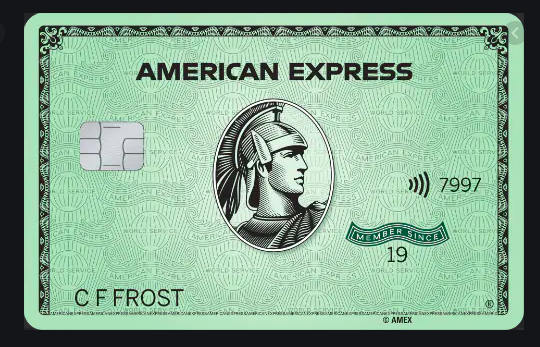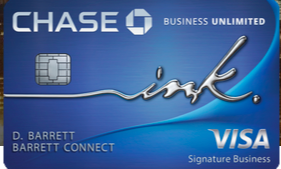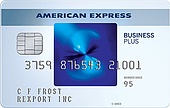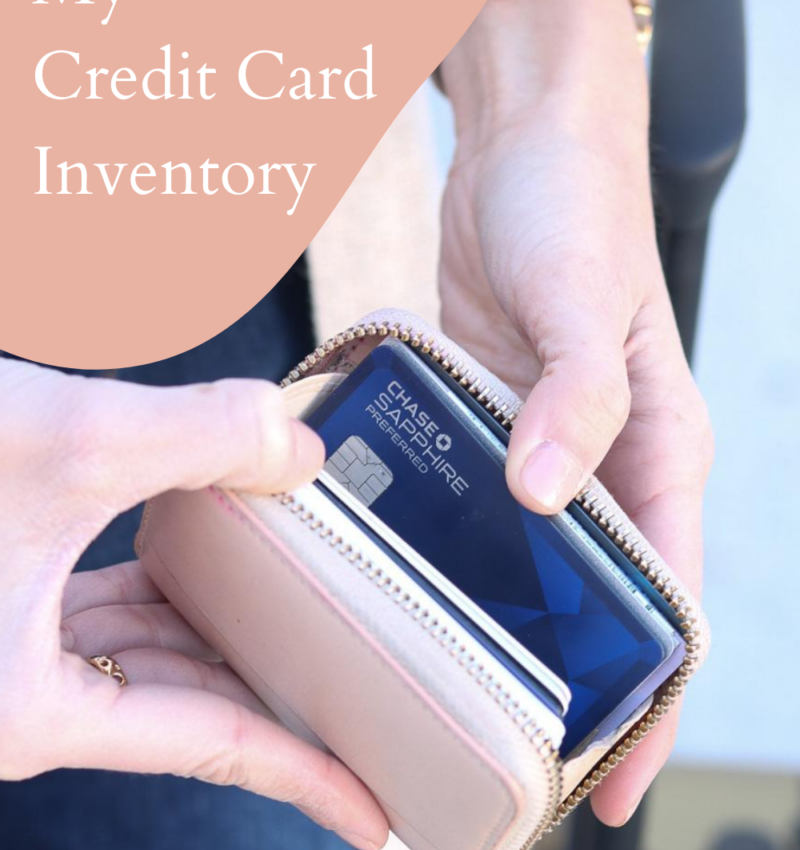The credit card listings that appear on Cobalt Chronicles are from companies that I may receive compensation from if you click on a link and sign up for a card. This compensation may impact how and where products appear on my site. Please note that not all credit card companies are included in my posts, only the ones that I personally use and recommend.

This article was first published in February 2018. And is updated quarterly. Updated June 2020.
I talk a lot about credit cards in my travel posts, but for good reason! They’re the main reason that Michael and I are able to travel as much as we do! We’ve figured out the points and miles game, and I want you in on the game too! The crazy thing about opening credit cards to earn points and miles is that you don’t have to change a single thing about your current spending. All those groceries (especially these days!), Uber rides, dinners out to eat … you’re still spending the same amount of money, you’re just getting something in return for your spend. If you missed my post on the number one myth about opening credit cards, be sure to check out that post here!
If you’re a complete NEWBIE to the credit card points and miles game, check out Michael’s super affordable travel course that will give you a great jump start!
Today I’m sharing my updated credit card inventory with you, including every credit card that I currently have in my wallet. I’m also including details on why I’ve chosen to keep that card in my wallet (the perks) and what I use that credit card for, if I use it at all.
If you’re just getting in on the credit card game, check out my post: The Best FIRST Credit Card You Need. This credit card is a no-brainer. No annual fee and you can easy into receiving rewards from your spending. It’s the first credit card mentioned below, the Chase Freedom.
Credit Card Inventory
In total, I currently have eleven credit cards open and in my wallet. I’ve opened and closed others in the past, but these are my tried and true. And no, opening credit cards does not ruin your credit score. My current credit score is over 800.
You’ll notice that all of my credit cards are either from Chase or American Express. The reason being is that those two programs allow you to transfer accumulated points from their programs out to different travel partners like Hyatt, Southwest, Delta, Flying Blue and many more! There’s no point in having a credit card to earn points to travel if you’re not earning the right type of points.
I broke the cards into two categories, personal and business. Let’s jump in!
Credit Card Inventory
Personal Credit Cards
Chase Freedom

This is the OG card in my wallet. The Chase Freedom was my very first credit card. It’s a great card to start with because there’s no annual fee (you can compare all no annual fee cards here!) and with it you can start getting in with the Chase program.
The two main reasons I keep this card in my wallet are the length of time that I’ve had it and the quarterly 5% bonus categories. Credit history plays a big part in your credit score. That’s why I like to keep this card around – I’ve had it the longest, which shows that I’ve been building credit since the day I opened the card. There’s no downside to keeping it since there’s no annual fee!
Another perk of this card is the quarterly 5% bonus categories. Each quarter there are different categories that you can earn 5x points on. For example, this quarter, Chase is offering 5x points on each dollar spent at Amazon and Whole Foods. So for every $1 that I spend at Amazon and Whole Foods, I earn 5 Ultimate Rewards points. Another example is that last quarter Chase offered 5x points on groceries – an awesome perk if you spend as much money on groceries every month as I do (especially during the pandemic!).
I only use this card on purchases that are part of the 5% bonus category each quarter.
Keep in mind that the Chase Freedom card is a cash back card. You’ll need to open either the Chase Sapphire Preferred (recommended!), Chase Sapphire Reverse, or Chase Ink Business Preferred – you’ll then be able to transfer any “cash back” to those cards, which in turn will become points (Ultimate Rewards) instead of cash back. This is what you want to happen so that you can transfer points to Chase travel partners like Southwest, Hyatt, and United!
Chase Sapphire PreferredChase Freedom Unlimited
I previously had the Chase Sapphire Preferred. The Sapphire Preferred is a GREAT card. I only got rid of it because I wanted the higher tier card, the Chase Sapphire Reserve (and the sign-up bonus points that came along with it). The Reserve carries a heftier annual fee than the Preferred (I’ll go into this below – changes to the Reserve annual fee in 2020 make it a hard card to recommend – I recommend the Preferred over the Reserve). The Preferred is a great addition to your credit card portfolio after you’ve started out with the Chase Freedom card mentioned above.
The Chase Sapphire Preferred offers 2x on all travel and all dining purchases, period. That’s where most of my spend goes so it made sense that I would want a card that earns double points on both of those categories. The Chase Sapphire Preferred is a great card to have for earning points to use for travel because the Ultimate Rewards points can be transferred to a number of different hotel and airline partners, many of which transfer at a one-to-one ratio (meaning one UR point equals one United mile, for example). You can read more on why the Chase Sapphire Preferred is a great card for travel here! Just note that post was written before I had the Chase Sapphire Reserve card.
Another perk of using it for travel purchases is the travel protection that it offers. Check out this post on how the card saved me around $500 after a missed flight! The Reserve also offers this travel protection. For all other purchases outside of the 2x categories, the Chase Sapphire Preferred earns 1x point per dollar spent.
Check out the Chase Sapphire Preferred here!
The Chase Sapphire Preferred card does carry an annual fee of $95, which is usually waived the first year, but the perks far outweigh the fee!
Chase doesn’t allow you to have both the Chase Sapphire Preferred and the Chase Sapphire Reserve at the same time. So I opted to product change my Sapphire Preferred to the Chase Freedom Unlimited card so that I could open myself up to applying for the Chase Sapphire Reserve (a few years ago). Check out this post on how to switch from the Chase Sapphire Preferred to the Chase Sapphire Reserve. There are a few steps you need to go through to make sure you receive the sign-up bonus when applying for the Chase Sapphire Reserve.
You can fully compare the two cards (and apply for either) here!
Ok – onto the Chase Freedom Unlimited. I product changed my Sapphire Preferred to the Chase Freedom Unlimited. This is a great card to have in your wallet! Check it out, along with other similar cards, here! It is similar to the Chase Freedom in that while you do earn rewards from purchases made on the card, the rewards are only transferable to Chase travel partners if you have a higher tier card (the Chase Sapphire Preferred (recommended!), Chase Sapphire Reverse, or Chase Ink Business Preferred).
There’s no annual fee on the Chase Freedom Unlimited and the biggest perk, it earns 1.5 rewards on every single dollar spent. PLUS, starting on September 13, 2020, Chase added these perks:
- 3X rewards on dining at restaurants, including takeout and eligible delivery services
- 3X rewards on drugstore purchases (a perk you won’t find on any other card!)
- 5X rewards on travel purchases through Chase Ultimate Rewards
The 1.5X rewards on every purchase outside of the higher bonus categories is the reason, I use this card for my everyday, personal spend when the spend isn’t eligible for any of the bonus categories offered by the 5X Chase Freedom categories or the 3X Chase Sapphire Reserve categories. Essentially, I use this card for every purchase that doesn’t land in a bonus category on another card. Check out how the Chase Freedom Unlimited compares to other cards (and apply for it) here!
Chase Sapphire Reserve
The Chase Sapphire Reserve offers 3x on all travel and all dining purchases, period. That’s where most of my spend goes so it made sense that I would want a card that earns triple points on both of those categories. The Chase Sapphire Reserve is a great card to have for earning points to use for travel because the Ultimate Rewards points can be transferred to a number of different hotel and airline partners, many of which transfer at a one-to-one ratio (meaning one UR point equals one United mile, for example).
The annual fee on this card is hefty. Previously, it was $450 per year (when I got the card). However, it’s currently $550. Even with the perks I mention below, it’s a hard one for me to recommend with that annual fee. I’ll likely product change to the Sapphire Preferred (annual fee $95 ) before my renewed annual fee of $550 comes up.
With that said, the perks of this card do almost match (and sometimes exceed) the hefty annual fee! First, the Sapphire Reserve offers $300 per year in travel credits, which Chase actually just changed in June 2020 to accommodate circumstances surrounding the pandemic – the $300 travel credit is not a travel/grocery credit (double check this as I foresee the grocery credit going away at some point in 2020). Basically, as soon as you purchase an airline ticket, take an Uber, or stay in a hotel, or now spend on groceries those charges will be credited back to your account until you hit the $300 limit. That alone puts the annual fee at $250. Another perk of using the Sapphire Reserve for travel purchases is the travel protection that it offers. Check out this post on how the Sapphire Preferred card, which offers the same protection, saved me around $500 after a missed flight! For all other purchases outside of the 3x categories, the Chase Sapphire Reserve earns 1 point per dollar spent.
Check out the Chase Sapphire Reserve and how it compares to other credit cards here!
AmEx Platinum
When I was planning my wedding in 2018/2019, I opened the American Express Platinum card. With the big spend items, I was easily able to hit the minimum spend threshold to hit the welcome bonus. My strategy is always to have an equal and ample number of both Chase Ultimate Reward points and AmEx Membership Reward points. Check out the AmEx Platinum HERE!
Like the Chase Ultimate Reward points, AmEx Membership Reward points can be transferred to a handful of travel partners like Delta, Air Canada (Aeroplan), Flying Blue, British Airways, Etihad, Singapore Airlines, Virgin Atlantic, and Avianca.
The annual fee on this card is hefty. It’s $550 per year. HOWEVER, unlike the Chase Sapphire Reserve, the perks of this card easily offset the annual fee so long as you take advantage of the perks! First, the AmEx Platinum offers $200 per year in travel credits. The way this works is you must designate a travel partner prior to making the purchase on your AmEx card. Lots of items qualify for the credit. For example, I recently designated Delta as my airline. I then charged my check bag fees to my AmEx card and was reimbursed for the cost. The cost went towards my $200 credit. That alone drops the fee to $350 per year.
Another benefit that I take full advantage of is $200 in Uber credits per year – UberEats counts too (so you can still take advantage during the pandemic!). Once you link your AmEx Platinum to your Uber account, credits are automatically deposited in your Uber account every month. I use all $200 easily. Now the annual fee is a mere $150.
I also make sure to take advantage of the $100 per year Saks credit. I use this credit for purchases that I would normally make at other department stores like Christmas gifts or refills on my makeup and/or skincare.
One last perk that I put to use when traveling is taking advantage of the lounge access that the AmEx Platinum offers. The card gets you in the AmEx Centurion Lounges, which are top notch! I save money by not having to spend an arm and a leg on coffee and/or snacks at the airport. And if you happen to fly Delta a lot, no worries if there’s not a Centurion Lounge at your airport, the card gets you access to all Delta Lounges when there’s not a Centurion Lounge and you’re flying Delta.
You can easily see how the hefty annual fee is outweighed by the benefits, you just have to take advantage of all of the offers!
Read all about the American Express Platinum card HERE!
AmEx Gold
I opened the American Express Gold card in 2020. One of the areas I (Michael and I) spend the most money each month is on groceries. I wanted a card that earns more than 1.5 (I was using the Chase Freedom Unlimited) points per dollar spent at grocery stores. In comes the AmEx Gold! The American Express Gold card earns 4X for every $1 spent on groceries at U.S. grocery stores AND restaurants worldwide (another big spend area for us). I now use this card for dining out over the Sapphire Reserve, which earns 3X on restaurants.
After putting enough of my regular spend on the card to hit the minimum spend necessary to hit the sign up bonus (hello tons of AmEx points!), I now only use this card for grocery shopping and restaurants. Otherwise, it stays put in my wallet.
The annual fee for this card is $250. I’ll easily earn points that can be redeemed for MUCH more value than that fee in one calendar year.
You can read more about the American Express Gold card (and apply for it!) here!
AmEx Green
I opened the American Express Green card in 2020. One of the only reasons I opened this card is because I was running low on American Express Membership Rewards points. The sign up bonus at the time I applied was 30,000 points once I hit the minimum spend of $2,000 in the first three months of opening the card (easy to do with my everyday spend). Sign up bonuses are an easy way to pad your points bank so that you have points to use for travel!
The American Express Green card earns 3X on spend at restaurants and on travel, so it’s a good option to have in your wallet if those are top spend areas in your budget. The annual fee on this card is $150. Again, I’ll easily earn points that can be redeemed for MUCH more value than that fee in one calendar year.
Chase World of Hyatt
I opened the Chase World of Hyatt card in 2019. I’d only recommend this card if you frequently stay at Hyatt properties or you’re aiming to stay at more Hyatt properties in the future. Michael and I are team Hyatt these days, so we both snagged this card when the sign up bonus was high.
You can read more about the card here!
The annual fee on this card is $95, however, with the card you receive one free night every year at a Category 1-4 property, most of which the nightly cash rate is much higher than $95, so the one night stay automatically wipes out the annual fee!
AmEx Starwood Preferred Guest Marriott Bonvoy
*The SPG program underwent major changes on August 1, 2018 due to the Marriott/Starwood merger.
Here’s a great article on the new rules and newly merged program. As of February 2019, I no longer use this card, however, I still have it open for one reason only, the free anniversary night. With the card, I receive one free night stay at a Marriott property valued at 35,000 points per night or less. The free night is deposited into my Marriott account on the anniversary of my card opening date every year.
There is an annual fee on this card – $95, but so long as I take advantage of the free night, the fee is worth it since most any one-night stay would cost more cash than $95.
Aside from Ultimate Rewards points earned on the Chase cards mentioned above, in my opinion, Starwood Preferred Guest (SPG) Starpoints are the next most valuable currency in the points and miles game. I mentioned why I love the SPG card and Starpoints in this post! Essentially, Starpoints are like UR points in that they transfer to a number of different airline and hotel partners.
I like to keep a big bank of UR points and Starpoinis for this reason. I use this card for everyday spend (spend that I would normally put on my Chase Sapphire) when I’m needing a bump in my Starpoint stash.
You can compare the AmEx Starwood Preferred Guest card with other hotel branded cards here! Make sure to take note of the awesome sign-up bonus!
Chase Southwest Rapid Rewards Premier – Closed June 2018
I originally signed up for this card as part of my strategy to earn the coveted Southwest Companion Pass (read more about that here and here). However, I don’t use this card anymore. There is a $99 annual fee on the card so I decided to close this one out.
I’d only recommend getting this card if you’re trying to hit the Companion Pass threshold of earning 110,000 points in a calendar year. The sign up bonus counts towards that amount.
You can compare this credit card with others here!
Business Credit Cards
Chase Ink Business Preferred – Closed January 2020
I closed the Chase Ink Business Preferred card in 2020 because I have other business credit cards that earned higher points and required a lower annual fee. I mainly decided to close this card because of the annual fee.
The Ink card earns 3x points per dollar spent on travel, shipping purchases, internet, cable, and phone services, advertising purchases on social media, and search engine optimization.
The annual fee is $95.
You can check out the perks of the Ink card here.
Chase Ink Business Cash
I recently added the Chase Ink Business Cash business card to my collection. If you have a higher tier Chase card (Sapphire or Ink Business Preferred), the sign-up bonus is worth a large number of Ultimate Rewards. There’s no annual fee on this card, which makes it a no brainer. I also love this card because it offers 5x Ultimate Rewards on all office supply store purchases and internet, cable, and phone services.
I use the Ink Business Cash card for all office supply store purchases and my internet and cable bill.
Chase Business Unlimited
I opened the Chase Ink Business Unlimited in late 2019. I opened this card for two reasons, one, it offered a nice sign up bonus once I hit the minimum spend – great for padding my Chase Ultimate Rewards points bank, and two, there’s no annual fee!
Another perk is that the Chase Ink Business Unlimited earns 1.5X for every dollar spent on all purchases.
This card is similar to the Chase Freedom in that while you do earn rewards from purchases made on the card, the rewards are only transferable to Chase travel partners if you have a higher tier card (the Chase Sapphire Preferred (recommended!), Chase Sapphire Reverse, or Chase Ink Business Preferred).
AmEx Blue Business Plus
The AmEx Blue Business Plus is a great card to have to help bank AmEx Membership Rewards points. Like URs, Membership Rewards are transferable to AmEx travel partners like Flying Blue (AirFrance/KLM) and Etihad. Check out this post for more information on how to redeem AmEx Membership Rewards.
There’s no annual fee on this card. The major perk of the AmEx Blue Business card is that it offers 2x Membership Rewards on every single purchase. I use this card for all of my business purchases that are outside of the bonus categories offered by the Chase Ink Business Preferred and Chase Ink Business Cash cards mentioned above.
You can check out the AmEx Blue Business Plus card HERE!
Chase Southwest Rapid Rewards Premier Business – Closed February 2019
Similar to the personal Chase Southwest Rapid Rewards Premier card mentioned above, I originally signed up for this card as part of my strategy to earn the coveted Southwest Companion Pass (read more about that here and here). Until I jumped on the Chase Ink business cards, I was using this card as my main business credit card. It makes more sense to earn Ultimate Reward points with the Ink cards than earn Southwest miles with the Southwest Business Card.
I’d only recommend getting this card if you’re trying to hit the Companion Pass threshold of earning 125,000 points in a calendar year. The sign up bonus counts towards that amount.
* I closed this card in February 2019 as I no longer needed it in my portfolio.
And that’s a wrap! My goal is to be super transparent with you on what cards I use for what purchases in order to earn the most points possible to put towards travel. If it weren’t for point earning credit cards, I seriously wouldn’t be able to travel like I do! Please note, you should NEVER open a credit card if you are not financially able to pay off the statement every single month in full. I do not carry a balance on any of my cards.
Questions?! Feel free to comment below or email me at [email protected]
And be sure to check out Michael’s course for beginners. It has everything you need to know to tackle the credit card game and start traveling for free!
Disclaimer: If you click and/or sign up for a credit card through certain links on this site or any of my related social media platforms, I may make a commission from that click through. The editorial content on this page is not provided by any of the companies mentioned, and has not been reviewed, approved or otherwise endorsed by any of these entities. Opinions expressed here are mine alone.



















Hi – I’m curious about the card switch from Sapphire Preferred to the Reserve. It says on the Chase website, “[The 50,000 points bonus for Reserve] is available to you if you do not have any Sapphire card and have not received a new cardmember bonus for any Sapphire card in the past 48 months.” This may have changed since you did the switch, but this means that you cannot use your method of changing cards and still get the bonus points from 48 months rather than 24, correct?
Hi Amanda – You’re correct, Chase updated its terms from 24 to 48. I just updated the post. The same process applies, except Chase is making you wait longer now to receive the bonus, which is a pain. Let me know if you have any other questions!
Hi! I’m considering the AmEx Platinum card as a joint card with my fiance. We love the travel perks that come with the card, and we want to have a joint card together just to make joint expenses easier to pay and keep track of. Our only concern (which the perks might outweigh this concern, but nonetheless) is that we can’t use it while we are abroad. Have you had any experience with using your AmEx outside of the country? Thanks!
Hi Sydney! Is your concern that merchants outside of the US won’t take Amex? The Amex Platinum doesn’t have foreign transaction fees, so you’re good there. But I always recommend having two bank credit cards on hand (that don’t have foreign transaction fees) while traveling abroad, just in case, especially if you’re traveling to more remote areas. I always travel with my AmEx Platinum and Chase Sapphire (Preferred or Reserve, depending on which card I have at the time). And always have a debit card that you can use at an ATM too (I prefer Schwab as they cover all ATM fees). I hope that helps! I’ve never run into an issue, but perhaps that’s also because I always have a backup … but I can’t think of a time off hand where I’ve been stuck.
Let me know if you have any other questions!